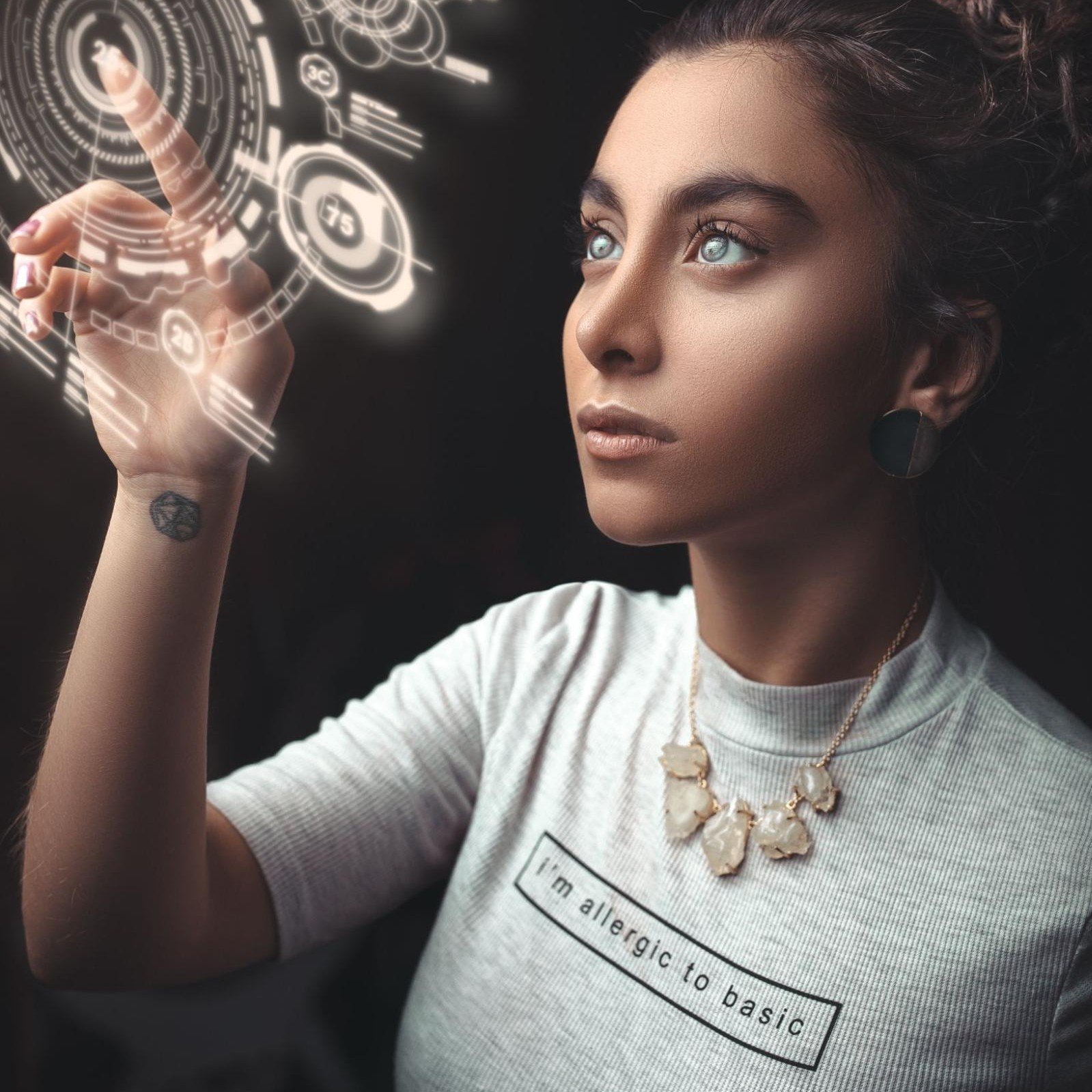Salon • Inspiration
No Bad Hair Days: 5 Advances Behind the 'Smart Salon' Vision

By Shanalie Wijesinghe . Sep.16.2021
Share Article
From handheld hair scanners to virtual makeup previews, the beauty industry is barely outside the realm of science fiction.
We may not have flying cars, but we’re surrounded by many of the wildest science-fiction advances ever conceived. Even beauty salons are slowly becoming “smart salons,” thanks to innovations that make clients look better than ever. And that’s before we get into virtual assistants and behind-the-scenes tools that make salon management a breeze. Here are just a few of the advancements that make stylists and clients feel like we’re living in the future.
Measure hair health with handheld scanners
We may not have Star Trek tricorders that analyze your entire medical history in a flash, but handheld scanners do exist for your hair. For example, Schwarzkopf — the company famously responsible for designing the first commercially available shampoos — recently unveiled handheld hair scanning technology. These devices use infrared and visible-light sensors to analyze hair health at the molecular level. With this information, machine learning algorithms can determine which treatments will be the most effective for the client’s precise hair type.
As this technology improves, salons won’t just use these devices to “read” a patron’s hair. The data will also fuel the creation of personalized shampoos mixed right before the client’s eyes. Moving forward, salons will have tools that take the guesswork out of beauty work while guaranteeing clients never have a bad hair day again.
Chat with a virtual salon assistant
answer phones, change the temperature, or handle any other extraneous task — they should be focusing on the client as much as possible. Front desk assistants and beauty technicians can address some of these obstacles, but smaller salons and startups don’t always have the extra resources to hire them.
As smart technology becomes more common — and more affordable — this will start to change. Voice-activated speakers are an excellent example, as many businesses adopted them to manage their music playlists. Salons can go a step further by tapping into Alexa or Siri’s advanced features to create full-fledged virtual assistants.
With a few spoken words, these assistants can remind stylists when the next appointment begins, adjust the temperature to make clients more comfortable, set alarms, call an Uber, and much more. These features are all powered by spoken word interfaces that are completely hands-free, so you can focus on styling hair first and adjusting music volumes second.
Preview hair and makeup in augmented reality
Augmented reality filters can do more than present you as a cartoon character — they also let clients test out new looks. Virtual try-on technologies that leverage smartphone cameras to render faces in different makeup or hairstyles represent the ultimate try-before-you-buy platform. With the right app, stylists can take the guesswork out of researching how certain products look, visualizing the result with a button press.
These technologies are already making their way into the beauty industry, but they can support salon-level interactions as well. Stylists can use tablet displays or visualization stations to present different looks to clients before making a final decision.
Host virtual consultations and beauty masterclasses
The professional relationship between a stylist and client doesn’t have to end when the appointment is over. Salons have several digital tools that let them interact with clients at home, provide one-on-one consultations, or even manage multi-session masterclasses on a given topic.
When the COVID-19 pandemic first ramped up, beauty brands offered online courses to educate clients and promote interactions in virtual environments. Most initiatives proved hugely successful — retailer Bluemercury’s masterclasses grew from one per week to three or four, with up to 400 attendees. There’s a high demand for home care lessons that salons can tap into by extending their digital presence.
There are many ways for salons to reach out to online clients. For example, they can offer live webinars, prerecorded YouTube lessons, or one-on-one videoconference consultations. In fact, having a variety of content creates opportunities to engage with multiple client demographics and may even attract brand-new customers. Finally, many attendees will show interest in displayed products, providing additional revenue streams even if classes are free.
Settle the bill with hands-free payments
In a digital world, paying at a checkout counter increasingly feels like an unnecessary formality. A forward-thinking salon can find ways to streamline this process, especially for regular clients. If you have salon management software with integrated point-of-sale options, like Boulevard Duo, paying the bill will be simpler than just walking out the door.
Beauty businesses often use client profiles to store a wide range of information, from services rendered to loyalty program details. POS solutions can also store payment details, such as credit card numbers or authorized payment services like PayPal and Apple Pay. Once these are filled out, stylists can charge clients automatically and email or text a receipt — no further action necessary. Finally, digital payments also provide a level of financial security since stylists can charge no-show fees without needing to track down a client.
It will take time before all these smart salon opportunities go industry-wide, but many are closer than you think — some are available from Boulevard! The only thing holding us back is a willingness to explore new ideas that benefit stylists and clients alike.
Boulevard was built to help your business achieve profitability at scale without losing an inch of sanity. See for yourself! Get a free demo today.
Sign up for weekly blog updates.
